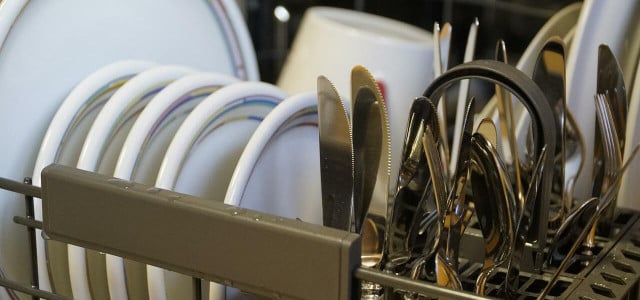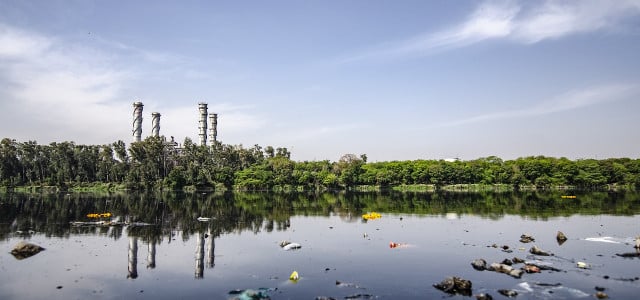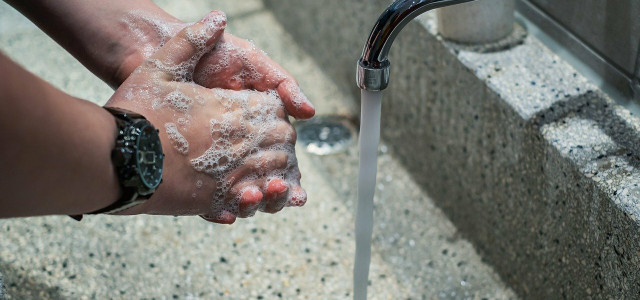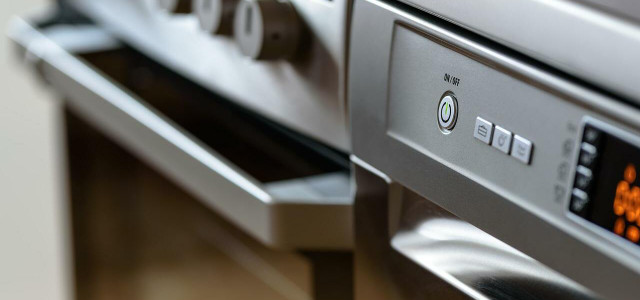Some of the biggest dishwasher mistakes are easily avoidable. In this guide, we'll show you the best ways to use your dishwasher so you can be kinder to the planet.
Dishwashers have become commonplace in most American households, with statistics from 2017 showing that over 80 million households in the country own a dishwasher. Only 20% of this number did not use their dishwasher in 2015, based on data from EIA’s Residential Energy Consumption Survey.
While these figures may have fluctuated over recent years, it’s safe to say that many American families rely on their dishwasher. If you happen to be one of these households, we can guide you through some of the biggest dishwasher mistakes, and how to fix them.
1. Using the Wrong Dishwasher Cleaning Tablets
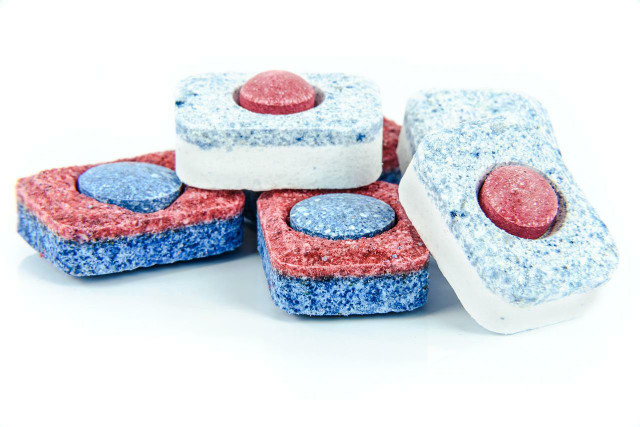


(Foto: CC0 / Pixabay / PhotoMIX-Company)
While it may feel easy to pop in a traditional dishwasher tablet, this may actually be one of the biggest dishwasher mistakes, as not all tablets are made using green ingredients. Dishwasher tablets aren’t considered to be environmentally friendly for the following reasons:
- Chemical ingredients: Some chemical ingredients found in dishwasher tablets can be released into the environment when the water from the dishwasher is drained out. Some examples of these chemicals include surfactants, which according to the Environmental Protection Agency (EPA) are slow to biodegrade. They may also contain potentially harmful synthetic preservatives, fragrances and colorings.
- Plastic: The production of the thin film of plastic that you’ll find around your tablets uses crude oil, a non-renewable resource, meaning they are not sustainable.
Making your own DIY dishwasher detergent, is by far the best solution from a sustainability and health standpoint. However, if you do wish to purchase detergent, look for eco-friendlier options, such as:
- Smol: Plastic-free packaging and reduced levels of added chemicals per wash. Tabs are available on their website.
- Ecover: Dye and fragrance-free, biodegradable, phosphate free, made using plant-based ingredients. Available on Amazon**
- Sonett Tablets: Biodegradable and free from phosphates. Available from Amazon**.
- Blueland: Plastic-free, free from dyes, fragrances and harmful ingredients. Sustainable packaging. Available on their website.
2. Pre-Rinsing Dishes
Contrary to popular belief, you shouldn’t pre-wash your dishes prior to placing them in the dishwasher. Your dishwasher can deal with most of the leftovers themselves, and it is only really necessary to remove the solids or other heavy soiling before placing your items in the dishwasher.
Pre-washing your dishes can increase your water consumption and can trick many modern dishwashers into thinking your plates are cleaner than they are.The enzymes in your dishwasher detergent work by attaching to food particles – if barely any are detected, then your dishwasher may not give them a thorough clean.
3. Turning on the Dishwasher When Half Full
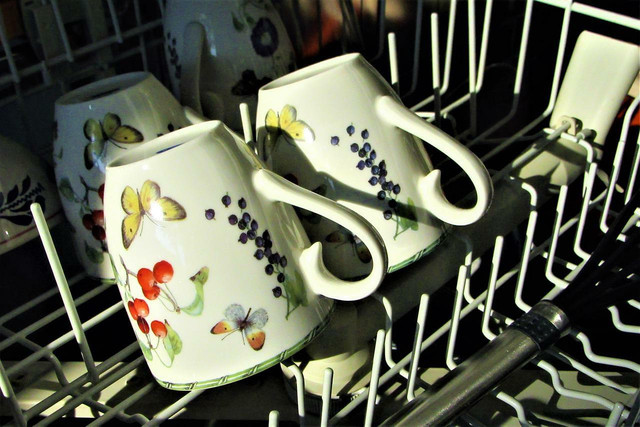


(Foto: CC0 / Pixabay / FotoRieth)
You should only run your dishwasher when it’s completely full, otherwise you are wasting both energy and detergent unnecessarily. You’ll also be increasing your water consumption, which costs money. It’s important to fill the space as efficiently as possible to ensure all your items will be cleaned properly.
4. Putting Unsuitable Items in the Dishwasher
One of the biggest dishwasher mistakes is putting unsuitable items into your dishwasher. This includes many non-dishwasher safe items such as:
- Thin plastic (could melt and release dangerous chemicals such as phthalates and BPA)
- Wood
- Silver
- Insulated mugs and containers
- Sharp knives (can become blunt after rubbing against other cutlery)
Many plastic dishes and containers can release unhealthy pollutants when mixed with hot water in a dishwasher, which may be drained into the surrounding environment. Make sure to check whether your plastic items are dishwasher friendly or not.
5. Loading the Dishwasher Incorrectly



(Foto: CC0 / Pixabay / PhotoMIX-Company)
Although it may seem like a pretty straightforward task, it is still possible that you may be loading your dishwasher incorrectly. There should be enough space in between your dishes to allow the dishwasher to clean them properly — don’t pile them all in randomly and hope for the best.
If you’re unsure what to do, learn how to load a dishwasher the right way. Overcrowding your dishwasher could leave you with dirty dishes, meaning you’ll most likely have to wash them again. This will end up using more energy and isn’t sustainable, as you’ll be washing up more than necessary.
Stacking your dishwasher correctly means you will be able to optimize its energy usage and contribute to lowering overall energy consumption, as you won’t be using your dishwasher more than you need to.
6. Not Cleaning the Filter
Although it may seem like a disgusting job, you should clean your dishwasher filter at least once a month to ensure that food particles aren’t being redeposited onto your dishwasher items. This will ensure that you don’t have to wash them again and will help keep your energy consumption down.
In addition, leaving your dishwasher filter for too long without cleaning it can cause blockages. We’ve made a step-by-step guide on how to unclog your dishwasher — and it’s actually pretty simple.
7. Using High Temperatures Too Often
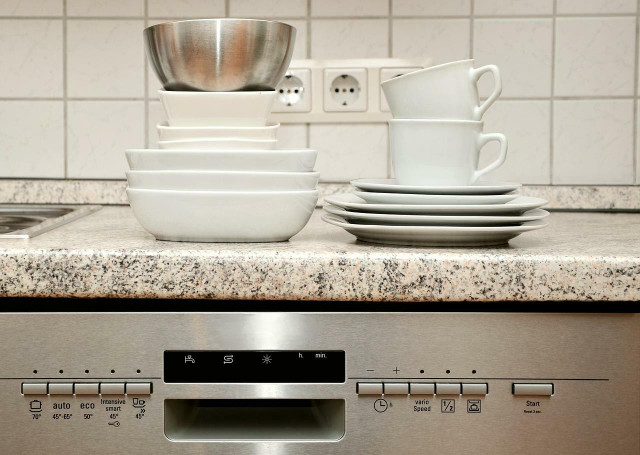


(Foto: CC0 / Pixabay / congerdesign)
This is an easy mistake to make, but many of us still do it. Setting your dishwasher to a high temperature is usually unnecessary and not energy-efficient.
Using the Eco setting will help you to reduce your dishwasher’s water consumption and will save on energy, as your dishwasher is using lower temperatures and less water. It is advisable that you only use higher temperatures for much dirtier dishes, which may be harder to clean.
8. Not Choosing an Energy Efficient Model
If you really want to make a positive environmental impact, you should opt for purchasing an energy-efficient dishwasher model.
In the US, ENERGY STAR Certified dishwashers have been designed to save energy and can save you an average 3,870 gallons of water over the course of the appliance’s lifetime. So when buying a dishwasher, this is something particularly important to look out for.
Some of the top-rated dishwashers average around 199-220 kWh of electricity per year. When compared to the average of 251.81 kWh per year, it is clear you can save energy by opting for an energy-efficient dishwasher model.
Read more:
- Citric Acid for Cleaning: Practical Household Uses
- 8 Benefits of a Cast Iron Skillet and 5 Downsides
- Is Tupperware Dishwasher Safe? Here’s How You Can Tell
Do you like this post?






